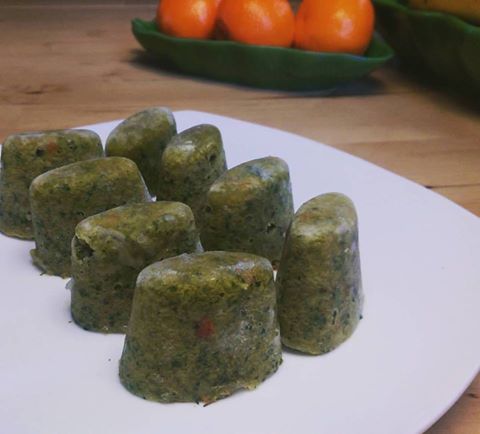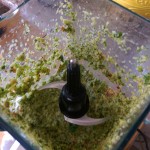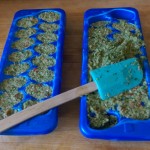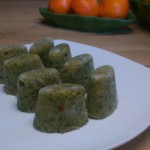When it comes to building flavor, the french have mirepoix (onions, celery, carrots) and creoles have the holy trinity (onions, celery, bell peppers). Puerto Ricans have sofrito. While it is the base of hundreds of Puerto Rican dishes, sofrito is derivative. You see Puerto Rican cuisine is the original fusion cuisine, with influences from Africa, Europe, and Asia. Much of our food is adapted from different cultures and sofrito is no different.
This powerhouse of flavor was brought to the island by Italian immigrants that relocated in the 1800’s during the Second Industrial Revolution. The Italians (along with other Catholic immigrants from Ireland and Corsica) were granted land after swearing loyalty to the Spanish Crown and allegiance to the Catholic Church via Spain’s Royal Decree of Graces. The Italians contributed many recipes to the Boricua’s culinary landscape, but none more influential than their soffritto.
Italian soffritto (onions, celery, carrots, garlic, and parsley) can sometimes include a meat like pancetta, bacon or prosciutto. Puerto Rican cooks kept the onions and garlic but ignored the carrots, celery, and parsley. Instead, they used island peppers known as cubanelles and ajis dulces (a sweet pepper that looks very much like a habanero). They subbed parsley with cilantro and recao (AKA culantro or Mexican Coriander). Sometimes tomato, ham or salt pork was also added. Sofrito was (and still is) used as a base for most of our soups, stews, beans and sauces.
There are as many recipes for sofrito as there are cooks on the island. They can be complex with a dozen different ingredients including olives, capers, roasted red peppers, salt, pepper and oregano. I prefer a simple sofrito, that I make in batches and freeze in ice cube trays for convenience. This gives me the freedom to add more levels of flavor if and when I want to.
My recipe for sofrito is a mixture of garlic, onion, recao, cubanelle peppers and ajis dulces. I also like to add a little smoky heat, nothing overpowering as that kind of spiciness is not found in traditional Puerto Rican cooking. The spicy aji caballero usually does the trick. Sourcing some of our island ingredients can be difficult, so here are some good substitutions if you find yourself coming up empty handed:
- Recao/culantro tastes like a stronger, more bitter version of cilantro. It can be found at latino markets and might be labeled as Mexican Coriander. Cilantro makes a good substitute. Just use double the amount asked for in the recipe.
- Cubanelles might be marketed as Cuban peppers. They are mild in flavor and you can substitute with green or red bell peppers.
- Ajis dulces look just like habaneros but they are sweet, not spicy peppers. If your local latino market doesn’t carry them, use 5 or 6 sweet peppers or a red or green bell pepper.
- Aji caballero is a hot red chili pepper that looks like a thicker version of a Thai bird chili. Red jalapeno pepper makes a great substitute.
For this preparation, I suggest Mongo Santamaria’s Sofrito. It’s got a nice slow build that ends up bursting with sabor! (Just like its namesake.)
Ingredients
- 1 medium yellow onion
- 1 head of garlic
- 2 cubanelle peppers or 1 green bell pepper
- 5 ajis dulces or 5 sweet peppers or 1 red bell pepper
- 1 bunch of recao or 2 bunches of cilantro (stems and all)
- 1 aji caballero or 1 red jalapeno pepper
- 1/4 cup olive oil
Directions
- Peel and chop the onion in half. Chop the halves into quarters and put them in your blender jar.
- Peel and clean one head of garlic. Place the bulbs in the blender jar.
- Clean, seed and devein all the peppers. Give them a rough chop and add them to the blender jar.
- Trim 1/4 inch off the recoa or cilantro stems. Clean in a basin of cool water, then shake them dry. Rough chop and add to the blender jar.
- Add the 1/4 cup of olive oil to the blender jar and puree all the ingredients into a chunky paste. Congratulations! You’ve just made sofrito.
- Using a rubber statula add half the jar’s contents to one ice cube tray and smooth into the each of the depressions. Repeat for the remaining sofrito.
- Place the trays side by side in a one gallon freezer bag and freeze for at least 8 hours. Remove the sofrito from the trays like you would ice cubes and store in the freezer in the ziplock bag.
Gallery
- Your sofrito should be a chunky paste, not liquid.
- Spread the sofrito with a rubber spatula.







And when that smell kicks in, OMG!! That smell churns your hunger and makes you anxious for the food to be done so you can eat!!
Food is just food without Sofrito, with Sofrito it is COMIDA!!!
PREACH.
Thanks for finally talking about > #IslandFlavor: Simple Sofrito – Island Girl Cooks < Liked it!
Thanks for being here for it!